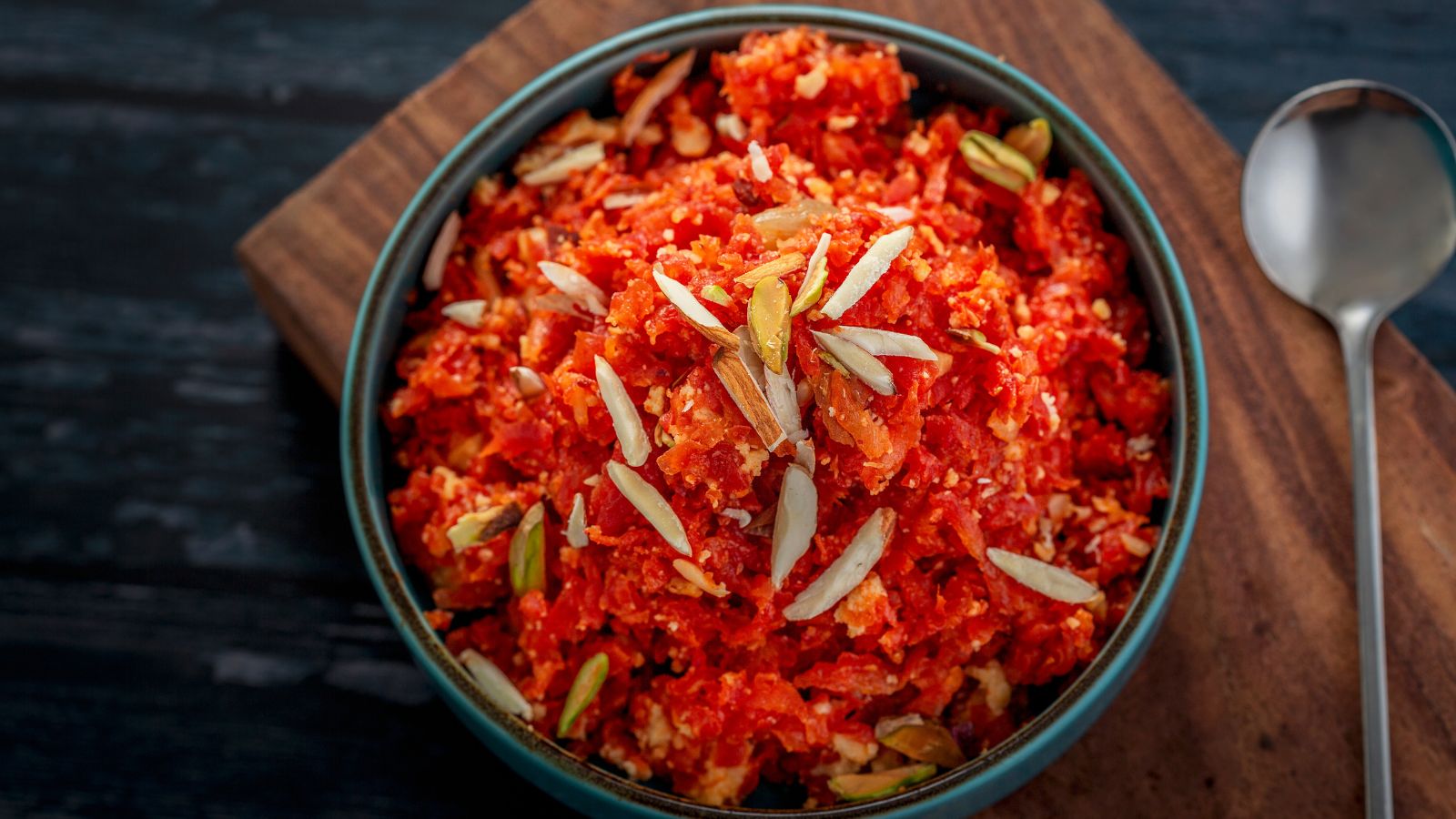📣 For more lifestyle news, click here to join our WhatsApp Channel and also follow us on Instagram
Karachi to Kozhikode, exploring the many shades of halwa; orange, white, and beyond
A deep dive into the origin theories, varieties, and cultural significance of India’s beloved halwa.
 Halwa’s journey to India is as fascinating as its varieties. (Photo: Freepik)
Halwa’s journey to India is as fascinating as its varieties. (Photo: Freepik)Over two decades in Delhi, I’ve realised gajar ka halwa is one of the most popular and widely prepared desserts across all economic strata of North Indian households. Its three main ingredients — grated carrots, milk, and sugar — are easily available and budget-friendly, making it the perfect warm dessert to help deal with Delhi’s harsh winters.
Who would think we have the Dutch to thank for this wonder? In the 17th century, Dutch farmers developed orange carrots as a tribute to William of Orange. These carrots soon found their way to Punjab through Afghanistan, and the rest, as they say, is history. Women cooked gajar ka halwa for hours on coal stoves, waiting for the grated carrot to cook through while the milk it was cooking in halved its quantity. Now people use khoya, milk solids available in sweet shops, instead of milk, to save time.
While scripting a food show on unique foods of India, I discovered that the orange gajar ka halwa isn’t the only variety available. Old Delhi’s Sheeren Bhawan, a 100-year-old shop, offers a nuanced white variety made from carrots grown in Ghaziabad. This is available only between mid-December and mid-February. In this one, grated white carrots hold their shape, do not shrink, and are less sweet, giving the halwa a slightly more evolved taste.
Lucknow, the city of great foods, serves another tasty, less sweet version, the black carrot halwa. While black carrots are abundant in Delhi’s markets, this dessert remains unique to Lucknow. Black carrots have a less grainy, earthy taste which lends itself very well to a dessert. The grated carrots are cooked with milk––no shortcut khoya here––sugar and ghee to create a black, almost deep purple, version that would appeal to anyone who doesn’t want a sugar high, and a slightly more elevated flavour.
How did halwa reach India?
Halwa’s journey to India is as fascinating as its varieties. The term halwa derives from the Arabic word hulw meaning sweet. Historians suggest it arrived via trade routes, with ports like Karachi and Kozhikode developing their distinct versions. Karachi Halwa, a chewy, fudge-like sweet, became a bone of contention post-Partition. While it was renamed Bombay Halwa in some regions, in Delhi, it remains Karachi Halwa, and is celebrated for its long shelf life.
The roots of halwa can be traced back to the 13th-century Arabic text Kitab al-Tabikh, listing eight variants. Indian texts, including the Ain-i-Akbari, documented its preparation in Emperor Akbar’s vegetarian meals, while medieval cookbooks like Nimatnama also mention it. Some claim it gained popularity in the Ottoman Empire under Suleiman the Magnificent – who ruled from 1520 to 1566 – and whose palace kitchens had a dedicated dessert section, the “Helvahane” or “The Dessert and Candy Room”. The theories are as many as the varieties of halwa available in India. And do make one lean towards the theory that halwa made its way to our shores thanks to the Arabs – made more believable by the use of saffron and dried fruits as flavouring agents.
 Gajar ka halwa is one of the most popular and widely prepared desserts across all economic strata of North Indian households. (Photo: Canva Pro)
Gajar ka halwa is one of the most popular and widely prepared desserts across all economic strata of North Indian households. (Photo: Canva Pro)
In The Illustrated Foods of India, food historian KT Achaya writes: “In India, it [halwa] connotes softly firm desserts made from a range of materials: Wheat flour, wheat grits, vermicelli, Bengal gram flour, fruits like banana and date, nuts like almond and vegetables like pumpkins and dates.” But this definition doesn’t include all the halwas you can find in India. Far removed from using vegetables in a dessert, which really isn’t uncommon in India, there are some non-vegetarian variants such as gosht (lamb) halwa, and anda (egg) ke halwa which are worth mentioning. Gosht halwa, originating in Uttar Pradesh’s Rampur, is a rich delicacy made by slow-cooking minced meat with sugar, milk, and ghee, while the anda halwa combines eggs, ghee, sugar, and saffron for a custardy treat.
Regional variations abound across India. Most Indian halwas are grain-based, such as suji halwa or atta halwa. In Gujarat, you find Mohanlal, a halwa made from besan (chickpea flour). Halwa is often served during celebrations or rituals. The Sikh community’s Karah Parshad, a wheat halwa, is offered at baptisms, marriages, and cremations. Lucknow’s jauzi halwa, made with almonds, milk, and saffron, is believed to boost immunity. In old Karnataka, a semolina halwa called shali-anna, also known as Kesari Bath, involves lightly frying wheat semolina in ghee before adding milk and sugar.
Whatever be its genesis, it would be fair to say that halwa is one of the most versatile of Indian desserts to have found favour and flavour unique to each of the regions it can be found in. Maybe it is indeed that one dessert tying Indian kitchens together.
Next week, in the spirit of Christmas, I’ll be writing about Christmas cakes, Muslim bakers, Hindu customers and a very Christian recipe!
📣 For more lifestyle news, click here to join our WhatsApp Channel and also follow us on Instagram



- 01
- 02
- 03
- 04
- 05

























